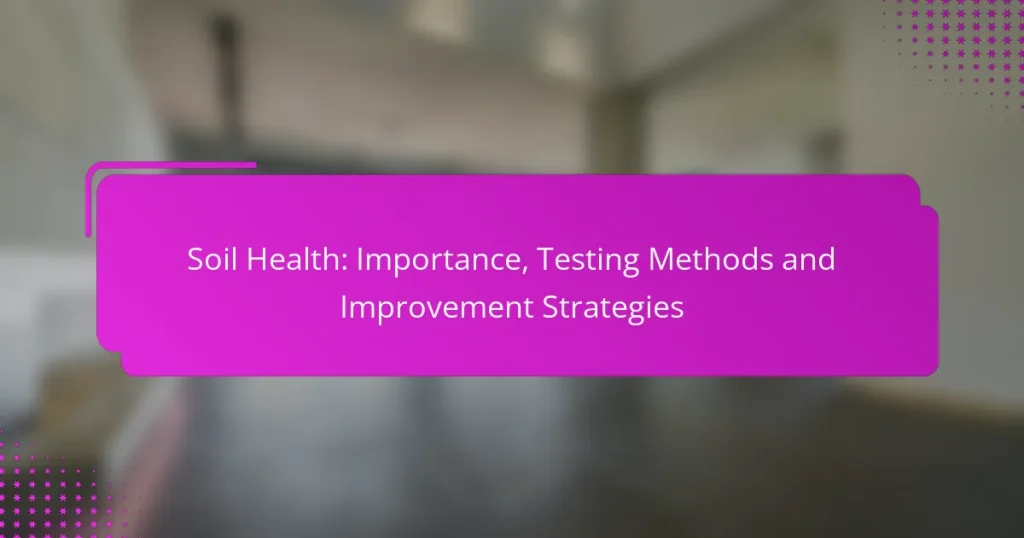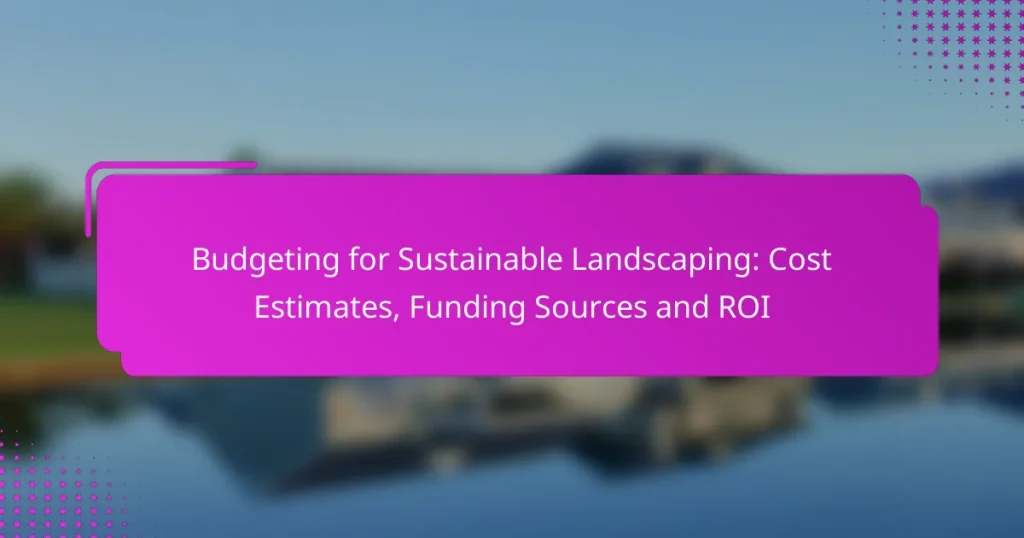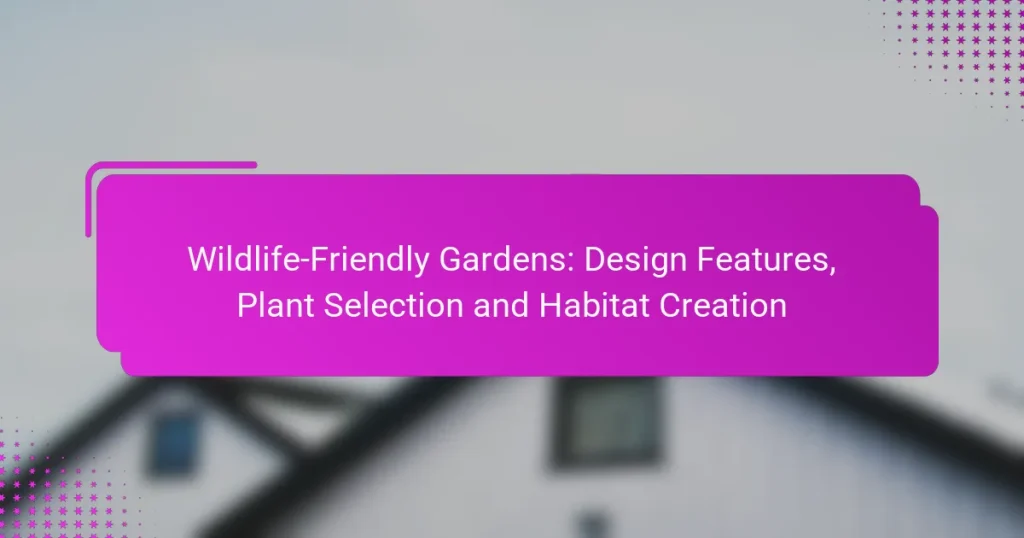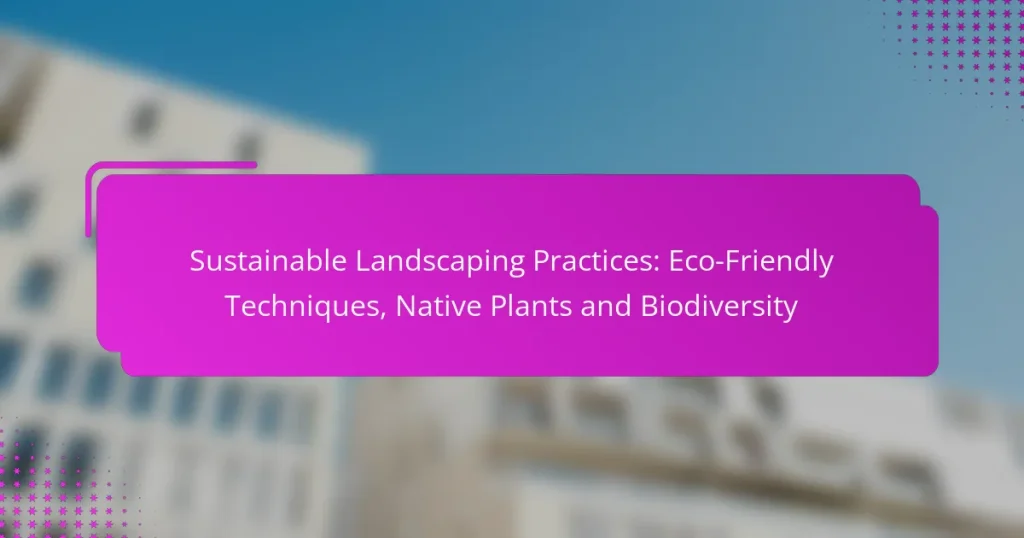Sustainable home design consulting focuses on integrating eco-friendly landscaping practices that enhance both the environment and the aesthetic appeal of urban spaces. By prioritizing resource conservation and local biodiversity, these practices not only create beautiful outdoor areas but also increase property value and promote long-term efficiency. Investing in sustainable landscaping can lead to significant savings while contributing positively to the community and the planet.
Soil Health: Importance, Testing Methods and Improvement Strategies
Native Plant Gardens: Design, Benefits and Maintenance
Hardscaping Options: Sustainability, Aesthetics and Durability
Budgeting for Sustainable Landscaping: Cost Estimates, Funding Sources and ROI
Wildlife-Friendly Gardens: Design Features, Plant Selection and Habitat Creation
Sustainable Landscaping Practices: Eco-Friendly Techniques, Native Plants and Biodiversity
What are sustainable landscaping practices for homes in urban areas?
Sustainable landscaping practices for homes in urban areas focus on creating eco-friendly outdoor spaces that conserve resources, support local biodiversity, and enhance the aesthetic appeal of neighborhoods. These practices minimize environmental impact while providing functional and beautiful landscapes.
Native plant selection
Choosing native plants is crucial for sustainable landscaping as they are adapted to local climates and soil conditions, requiring less water and maintenance. These plants support local wildlife, including pollinators, and help maintain the ecological balance.
When selecting native plants, consider species that thrive in your specific urban environment. For example, in the U.S., options like coneflowers and black-eyed Susans are popular for their resilience and beauty.
Rain gardens
Rain gardens are designed to capture and absorb stormwater runoff, reducing flooding and improving water quality. They typically consist of native plants and soil that filter pollutants before the water enters the groundwater system.
To create a rain garden, choose a low-lying area in your yard, dig a shallow basin, and plant native species that can tolerate both wet and dry conditions. This not only helps manage water but also adds visual interest to your landscape.
Xeriscaping
Xeriscaping is a landscaping method that reduces or eliminates the need for irrigation by using drought-resistant plants and efficient design techniques. This practice is especially beneficial in urban areas facing water scarcity.
Key principles of xeriscaping include grouping plants with similar water needs, using mulch to retain moisture, and incorporating hardscapes to minimize lawn areas. This approach can significantly lower water bills and maintenance efforts.
Permeable paving
Permeable paving allows water to infiltrate through surfaces, reducing runoff and promoting groundwater recharge. This is particularly important in urban settings where impervious surfaces can lead to flooding and water quality issues.
Options for permeable paving include porous asphalt, permeable concrete, and interlocking pavers. These materials can be used for driveways, walkways, and patios, providing both functionality and sustainability.
Composting systems
Implementing composting systems in urban landscaping helps reduce waste and enriches soil health. Composting converts organic materials, like kitchen scraps and yard waste, into nutrient-rich soil amendments.
To start composting, designate a small area in your yard or use a compost bin. Regularly add kitchen waste, yard clippings, and other organic materials, turning the pile occasionally to aerate it. This practice not only benefits your garden but also reduces landfill contributions.
How can sustainable landscaping improve home value?
Sustainable landscaping can significantly enhance home value by creating an attractive and environmentally friendly outdoor space. This approach not only appeals to potential buyers but also contributes to long-term savings and efficiency.
Increased curb appeal
A well-designed sustainable landscape can dramatically boost a home’s curb appeal. Features such as native plants, attractive hardscaping, and efficient irrigation systems create a visually appealing environment that draws attention. Homebuyers often prioritize properties with well-maintained outdoor spaces, making this an essential investment.
Consider incorporating elements like flowering shrubs or ornamental grasses that thrive in your local climate. These choices not only enhance aesthetics but also require less water and maintenance.
Energy efficiency
Sustainable landscaping can improve energy efficiency by strategically placing trees and shrubs to provide shade and wind protection. This natural barrier can reduce heating and cooling costs, leading to lower utility bills. For example, planting deciduous trees on the south and west sides of a home can significantly lower summer cooling expenses.
Incorporating green roofs or walls can also contribute to energy savings by providing insulation. These features can help maintain comfortable indoor temperatures, further enhancing the home’s value.
Reduced maintenance costs
Implementing sustainable landscaping practices often leads to reduced maintenance costs over time. Native plants typically require less water and fewer chemical treatments, which can lower ongoing expenses. Additionally, using mulch and ground covers can minimize weed growth and the need for frequent mowing.
When planning your landscape, opt for drought-resistant plants and efficient irrigation systems to further decrease maintenance efforts. This not only saves money but also promotes a healthier environment.
What are the costs associated with sustainable landscaping consulting?
The costs of sustainable landscaping consulting can vary widely based on the scope of the project, the complexity of the design, and the specific services required. Generally, clients can expect to invest in initial consultations, design and implementation, and ongoing maintenance.
Initial consultation fees
Initial consultation fees typically range from $100 to $300, depending on the consultant’s experience and the project’s complexity. This fee often covers an assessment of the site, discussions about goals, and preliminary recommendations.
Some consultants may offer a free initial consultation, while others might charge a flat fee or an hourly rate. It’s advisable to clarify the fee structure upfront to avoid surprises.
Design and implementation costs
Design and implementation costs can vary significantly, generally falling between $1,000 and $5,000 or more, based on the size of the area and the specific features desired. This phase includes detailed planning, selection of plants, materials, and any necessary construction work.
Clients should consider the long-term benefits of investing in native plants and sustainable materials, which may have higher upfront costs but can lead to lower maintenance and water usage over time.
Long-term maintenance expenses
Long-term maintenance expenses for sustainable landscaping can range from $50 to $200 per month, depending on the size and complexity of the landscape. Regular maintenance might include watering, pruning, and seasonal planting.
Investing in drought-resistant plants and efficient irrigation systems can significantly reduce these ongoing costs. It’s wise to establish a maintenance plan that aligns with the landscape’s needs and the owner’s budget.
What certifications should sustainable landscaping consultants have?
Sustainable landscaping consultants should hold relevant certifications that demonstrate their expertise in environmentally responsible practices. Key certifications include LEED accreditation, Landscape Industry Certified, and Organic Land Care certification, each focusing on different aspects of sustainable landscaping.
LEED accreditation
LEED (Leadership in Energy and Environmental Design) accreditation is a globally recognized certification that indicates a professional’s knowledge of sustainable building practices. For landscaping, this means understanding how to design outdoor spaces that contribute to energy efficiency, water conservation, and sustainable site development.
Consultants with LEED accreditation can help clients achieve specific sustainability goals, such as reducing water usage or selecting native plants that require less maintenance. When hiring a consultant, check if they have completed the necessary training and passed the LEED exam.
Landscape Industry Certified
The Landscape Industry Certified program, offered by the National Association of Landscape Professionals, validates a consultant’s skills in landscaping practices, including installation, maintenance, and design. This certification ensures that the consultant is knowledgeable about industry standards and best practices.
When selecting a consultant, look for those who are Landscape Industry Certified, as they are trained to implement sustainable practices effectively. This certification can also indicate a commitment to ongoing education in the field.
Organic Land Care certification
Organic Land Care certification focuses on environmentally friendly landscaping practices that avoid synthetic chemicals. This certification is essential for consultants who prioritize organic methods, promoting soil health, biodiversity, and ecosystem balance.
Consultants with this certification can guide clients in creating landscapes that are not only sustainable but also safe for children and pets. When considering a consultant, inquire about their approach to organic land care and their experience with native plant selections and natural pest management strategies.
How to choose a sustainable landscaping consultant?
To choose a sustainable landscaping consultant, prioritize their expertise in eco-friendly practices and their ability to tailor solutions to your specific needs. Look for professionals who demonstrate a commitment to sustainability through their design philosophy and project execution.
Evaluate experience and portfolio
Assessing a consultant’s experience and portfolio is crucial in determining their capability. Review past projects to see if they align with sustainable principles, such as water conservation, native plant usage, and soil health. A strong portfolio should showcase a variety of completed projects that highlight their versatility and creativity in sustainable landscaping.
Consider asking for examples of projects similar to yours. This can provide insight into how they approach challenges and implement sustainable practices effectively. A consultant with a diverse portfolio is likely to bring innovative ideas to your landscaping project.
Check client testimonials
Client testimonials can offer valuable insights into a consultant’s reliability and effectiveness. Look for reviews that specifically mention the consultant’s knowledge of sustainable landscaping practices and their ability to deliver on promises. Positive feedback from previous clients can indicate a strong track record in the field.
Consider reaching out to past clients for direct feedback. Ask about their experiences regarding communication, project management, and the long-term performance of the landscaping solutions implemented. This firsthand information can help you make a more informed decision when selecting a consultant.






